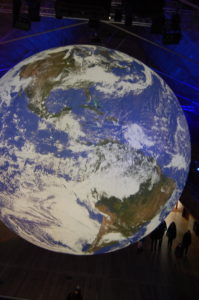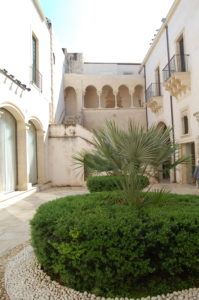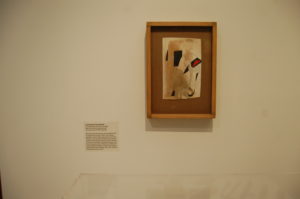As our friend from Austria said tactfully, “She didn’t have to pay for all her paintings.” A different way of putting it is “Services rendered.” Peggy Guggenheim was certainly not the first to have acquired material in that way, nor was she the last. Unlike many, she was concerned for the quality of the works, or their associations, not their monetary value.
That quality is there for us to admire now, and those who do are grateful to her. In a way her collection resembles Kettle’s Yard in Cambridge, where many of the works were gifts from artist-friends or purchased cheaply from artists who were to become famous. It is also housed in a modernist building, though at Kettle’s Yard converted. Both also have gardens, if serving different functions.
Some of the works stand comparison with any made in the twentieth century; others are more modest in scope and appeal. That is no problem: they were, and despite the museum the Palazzo has become, they are essentially works for a domestic setting. That said, who would not want such a setting, especially for the equestrian sculpture with its priapic rider facing the Grand Canal? It now shares the space with a bright red Calder sculpture.
The rooms retain much of their domestic furniture, allowing the collection to be seen as by guests of Peggy Guggenheim. They could once have sat to eat with a Braque to look at or – if strong of stomach – a Max Ernst. De Chirico’s eerie spaces or the Russians Lipchitz and Malevich would have been alternatives. There are Brancusi sculptures, again as at Kettle’s Yard, and there is now an extended garden for other sculptures acquired by donors since Peggy Guggenheim’s death. These include contemporary works by Caro and Kapoor. An interior extension provides for works collected by a later American couple, including some of the artists who will be in the forthcoming Royal Academy exhibition of Abstract Expressionists.
If the cafe is expensive, that merely reflects prevailing prices in Venice: even before Brexit it was not a place to visit without money. Part of the price is offset, however, by being able to take a leisurely look at the sculptures in their garden setting. Not only in the garden but in the buildings as well the Guggenheim is a place of peace and leisure in a city noted for anything but those qualities.










